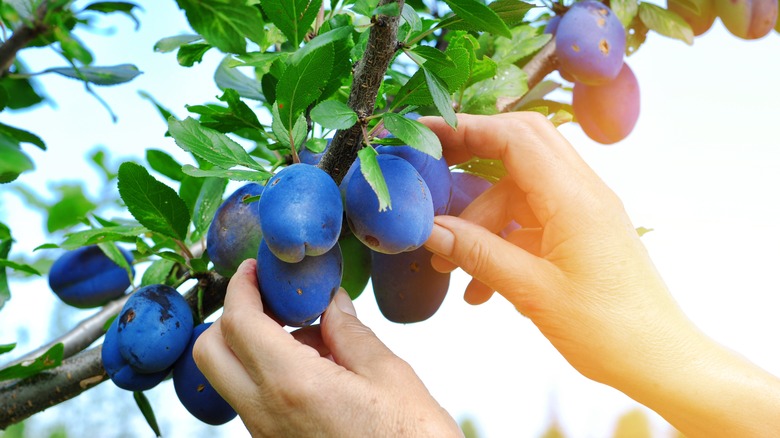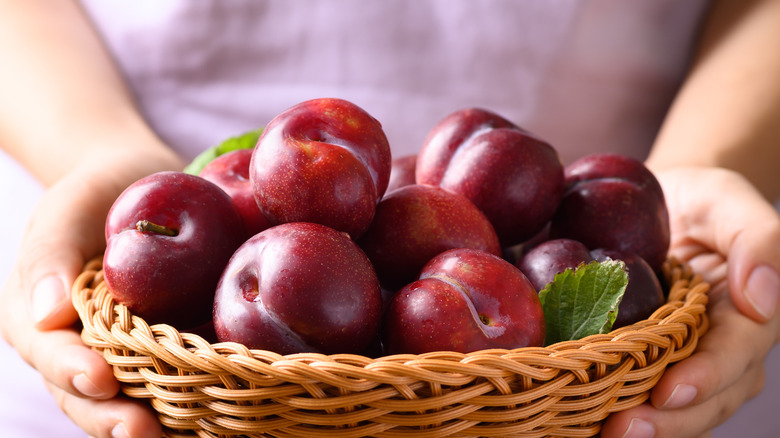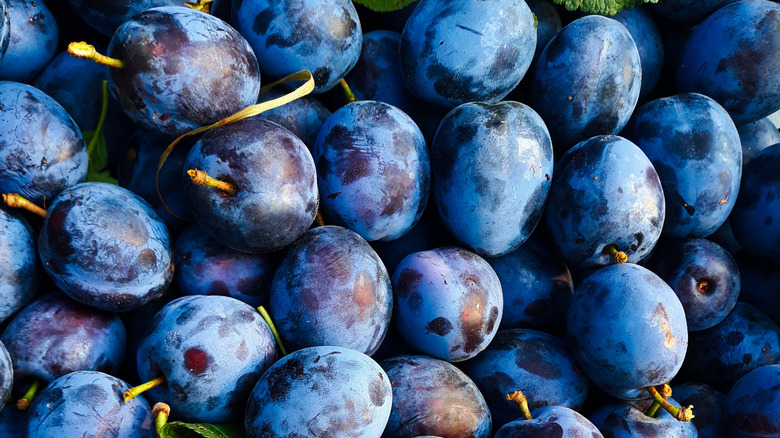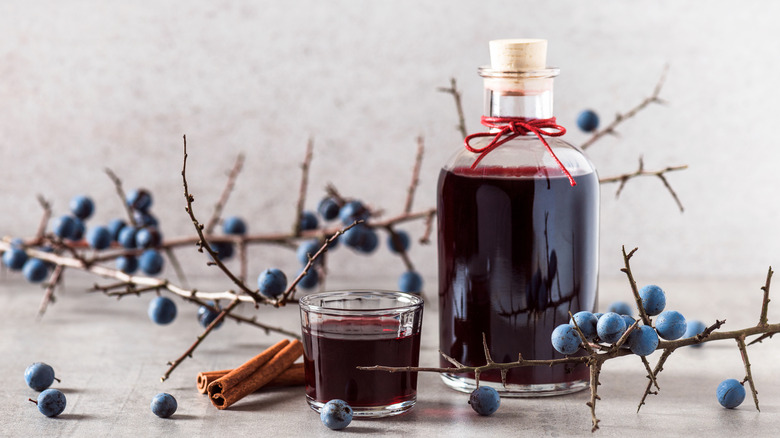Most Of The World's Plums Come From This Country
When compared to other fruits such as the flashy pomegranate or the prickly pineapple, the plum seems rather humble with its stone core and dusky purple hue. And though you may have heard of plum pudding before, odds are you haven't tried a plum-lavender pie or plum-flavored cocktails. Plums also have their place in savory dishes. Chinese plum sauce, for example, acts as a dipping sauce for wontons and spring rolls or can be used as a stir-fry sauce. Despite the variety of applications for plums, for the most part, this sweet peach-like fruit simply goes overlooked and underappreciated when it really should be indulged in more often.
The plum is a part of the Rosaceae family which also includes some of our favorite fruits like apples, pears, peaches, apricots, blackberries, raspberries, sloes, and even roses (via Britannica). European plums (Prunus domestica) and Japanese plums (Prunus salicina) are especially popular varieties and are often consumed fresh, turned into marmalades, jams, or baked into pastries like tarts. But where are these popular varieties produced?
China's plum dominance
European plums are traditionally dried into prunes or turned into condiments, while the Japanese variety is commonly eaten fresh (via Agricultural Marketing Research Center). Despite their names, these plums are now grown all over the world in countries like Romania, India, the United States, and China. According to Hobby Farms, the plum was cultivated in China over 2,000 years ago and was highly valued as a source of food. Since domestication within the country, China has continued to develop a massive industry dedicated to plums and sloes.
The Food and Agriculture Organization of the United Nations reported that in 2020 alone, China managed to produce over 7.1 million tons of plums and sloes, making it the largest plum-growing country in the world. Romania is the second largest producer, but it's far behind China at just over 835,419 tons. Serbia is third in line with 641,000 tons and Chile is further behind them with 458,000 tons, so none of the competitors come close to China's plum production.
The long history of plums
The plum, while maybe not as highly lauded as the strawberry or blueberry, does have quite a long history. According to Food Print, the plum is not as old as some of the fruits native to the Mesopotamian region like olives or figs, but there is proof of plum stones being found in Germany, Ukraine, and Cyprus which date all the way back to the Neolithic era (4000 to 2500 B.C.E). Food & Nutrition says that over time, we've managed to cultivate quite a few hybrid fruits and now we have over 2,000 varieties of plums in the world today that range in color from purple to red to white.
As for the cultural importance of the plum, Asian Botanical claims that plums symbolize the Five Blessings in China and are used to celebrate the new year, representing vitality. The plum blossom, which blooms in the cold, was made China's national flower in 1964 due to the power of its resilience, per Google Arts & Culture. Japan also shares a deep appreciation for the fruit and has annual plum festivals to honor the plum and all it represents.
Plums vs. sloes
As you might have noticed above, Food and Agriculture Organization of the the United Nations groups plums and sloes together when accounting for China's total crop production. Some of you might not have even heard of a sloe before today, but it also belongs to the Rosaceae plant family. The New York Times describes the fruit as a wild European plum which is notably more sour than other plum varieties. According to Ask Difference, the sloe grows from the branches of blackthorn and is small in size compared to the fleshier plum.
Sloes also have a number of health properties. Fruits Info claims that the fruit aids digestion, constipation, bloating, diarrhea, cramps, and kidney stones. Plums have similar benefits related to digestion and also prevent heart disease and help control blood pressure, per WebMD. Sloes can be turned into jams, jellies, and syrups like plums, but are also known to make a floral liqueur known as sloe gin. The traditional plum may be more popular for consumption, but the sloe is just as edible, it is simply a little more wild and bitter than one would expect.



